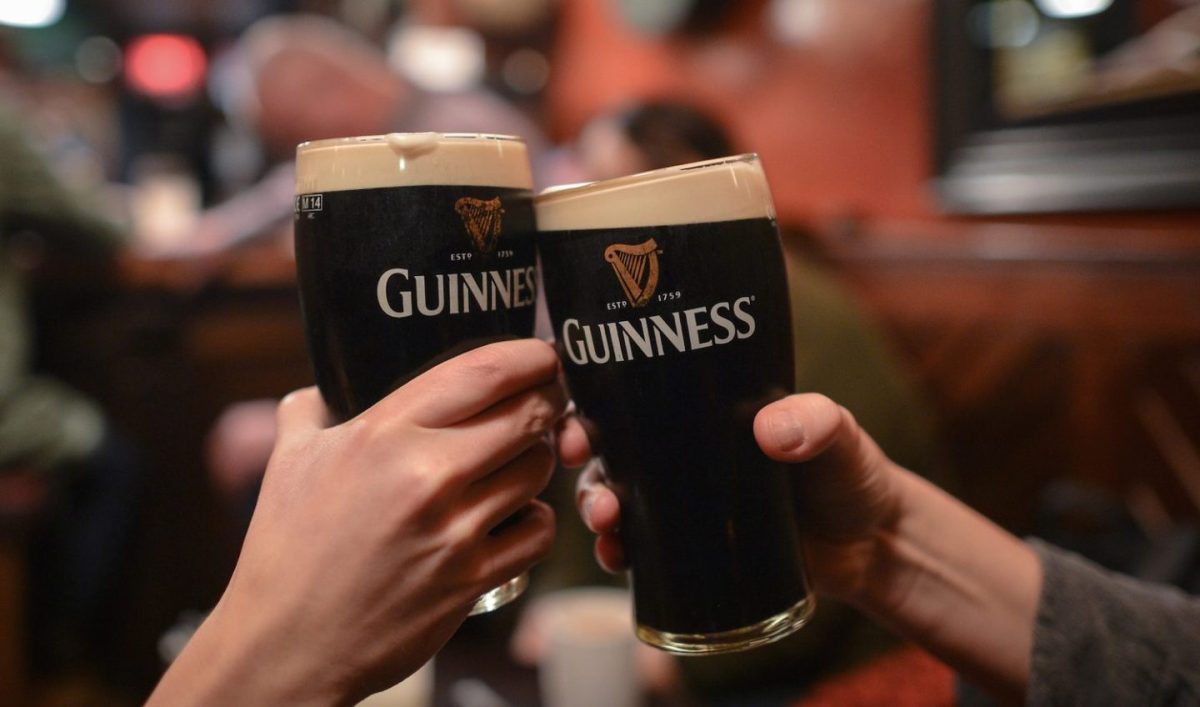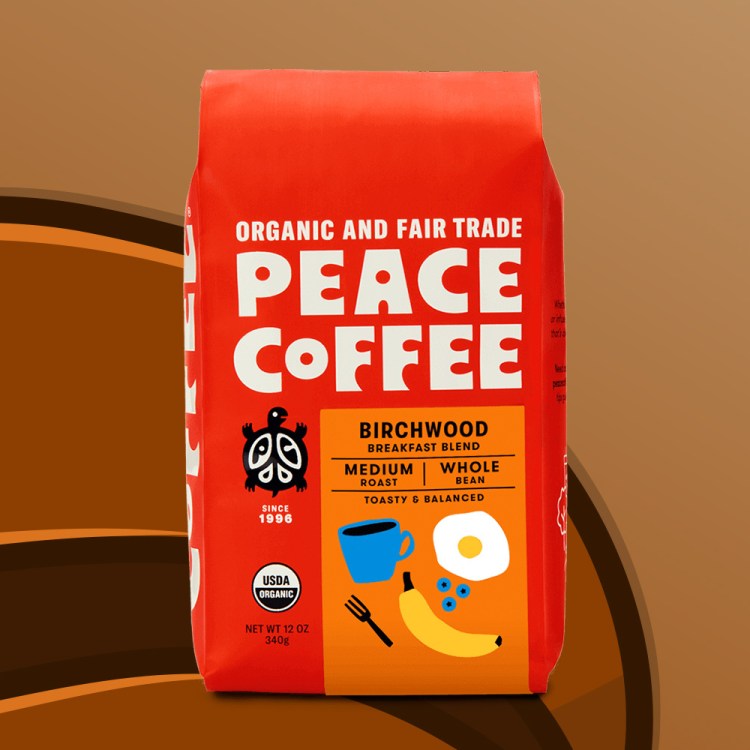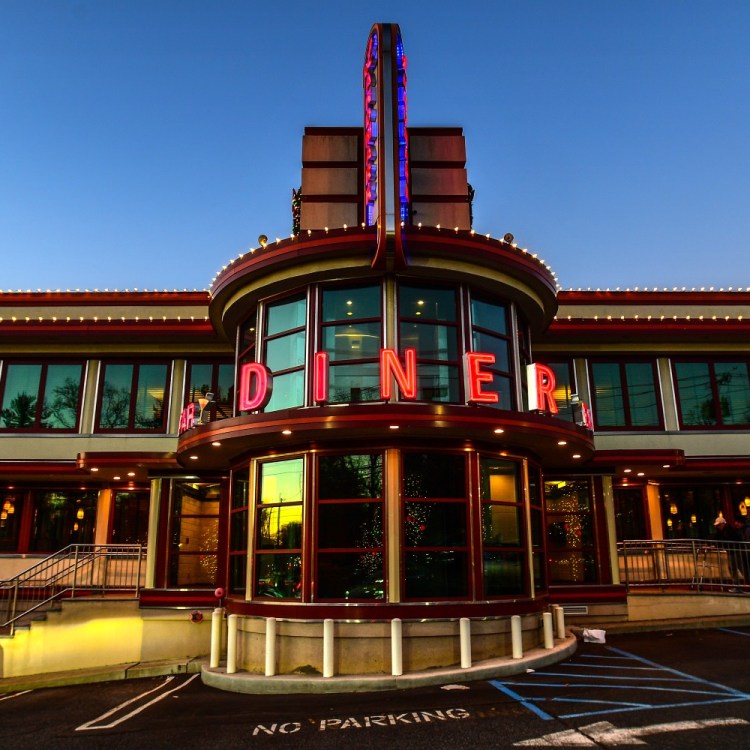Guinness is in it for the long haul. Back in 1759, Arthur Guinness signed a Dublin brewery lease for 9,000 years. (Really.) In balance with that, a couple centuries seems a blip. But since it provides another reason to celebrate on St. Pat’s, Guinness’s 200th St. Patrick’s Day in the U.S.A. is an excellent opportunity to raise a pint, look at how Guinness got here and even quickly address where the new few thousand years may take them.
The American Arrival
Guinness shipped for America late in 1817, with eight barrels headed to John Heavy in South Carolina. “Small beginnings, for sure,” admits Aaron Ridgeway, a Guinness Storehouse beer specialist. (Albeit more than London initially received, which Ridgeway notes was sent only four barrels for its first shipment.)
This wasn’t the pint most Americans think of today—Guinness Draught didn’t appear until 1959, with the combination of nitrogen gas and carbon dioxide creating the world’s first nitro beer. Instead, it was another dark beer: porter. Ridgeway says that beers intended to be shipped overseas had to be “heavily hopped to allow safe passage.” (In 1818, the voyage from Liverpool to New York took at least three weeks and another week or so could easily be added to the travel time.)
This high hop content led to a need for “more malt for balance,” which resulted in a struggle to create a beer that could survive an epic journey… and still have a taste worth shipping it in the first place.
Arthur Guinness chose to take on the “massive challenge to build this really balanced beer that would able to withstand exports.” The result was West Indies Porter. (Guinness today proclaims it simply “the pioneering brew that began it all”—we’ll have more on it momentarily.)
In general, porters were associated “mostly with dockworkers or laborers.” In the United States, it tended to be particularly popular in the Irish community.
RealClearLife has written about the evolution of St. Patrick’s Day before. It didn’t become a public holiday in Ireland until 1904 and even then it was a rather reserved affair. (Before the 1960s, this was a day Ireland closed the pubs.)
Irish Americans largely shaped what St. Patrick’s Day is today, starting with their first celebration way back in 1737 in Boston. Gradually, a slow acceptance of the holiday was achieved, which went hand in hand with the Irish emerging as a force in America. Key milestones include President Harry S. Truman attending New York’s St. Patrick’s Day Parade in 1948 and Chicago dying its river green for the first time in 1962.
An Irish-American tradition had crossed over to the greater culture and brought along a beloved beverage.
“We have two Christmases every year: St. Patrick’s Day and actual Christmas,” Ridgeway says. This results in Dublin’s St. James’s Gate Brewery “pumping out 3.5 to 4.2 million pints every single day.”
A Parallel Path
Yet Guinness also took another route. While Ireland, the United Kingdom, the U.S.A and many other places embraced Guinness Draught, others stuck with the porter, which evolved into Foreign Extra Stout. In particular, it found great popularity in Africa.
“By the 1900s, there was a big push,” Ridgeway says. “We opened our first brewery in Africa in the 1960s.” More were to come, leading to “over two dozen different breweries across the continent, from Nigeria to Ghana to Tanzania.”
By 2007, Nigeria officially passed Ireland as the world’s second largest consumer of Guinness, trailing only the United Kingdom. (The U.S. was knocked down to fourth place, with Cameroon in fifth.)
Working in Dublin, Ridgeway says he’s always delighted to encounter passionate Guinness drinkers from Africa. One visitor told a particularly memorable tale of his grandfather (who “worked in the diamond mine in South Africa to build a life for them so they could move to Ghana”) and his consumption of Guinness for professional reasons: “At the end of the shift, the miners would get together and they would pour a little bit of Foreign Extra Stout into a glass and if they had any gems or precious stones they would drop them into the glass and use the torch on their helmets to shine through the beer, because it was said that only true diamonds would shine through the darkness of a Guinness. It’s such a good story.”
(Ridgeway adds, “I have no idea if it’s true.”)
The fact that Africa is arguably the most important market for Guinness today comes as a shock to many drinkers, particularly since much of that continent isn’t even consuming what Americans think of as the classic pint. Ridgeway says people should know that Guinness has more to offer than they might suspect: “Right now, we have more variation in the beers in our portfolio than we’ve ever had in history.”
The Options Ahead
Maryland is now home to the Guinness Open Gate Brewery & Barrel House, which notes it is the “first Guinness presence on U.S. soil since 1954.” Ridgeway says it offers a chance to “show ourselves to the American beer community and stand besides other amazing brewers” as it produces Guinness Blonde American Lager and also develops new beers for potential regional distribution. (Ridgeway reports they are “making a stout with crab spice.”)
In general, Ridgeway says this is the ideal time to access both historic Guinness offerings—he adores the “very soft, dark cherry, coffee-like flavor” of Guinness Special Export (“You’d actually know it as Antwerpen Stout”), which was “originally available in Belgium and brought out shortly after World War II”—and more experimental offerings, such as St. James’s Gate’s “seaweed stout”: “It gives that saltiness and you get a complete complement on your palette.”
Above all, Ridgeway says one should remember that Guinness is just in its infancy: “We have over eight-and-a-half thousand years left on our lease.”
Join America's Fastest Growing Spirits Newsletter THE SPILL. Unlock all the reviews, recipes and revelry — and get 15% off award-winning La Tierra de Acre Mezcal.
























